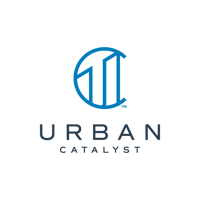Back in January, we expanded our fund offerings to include what I call a “turnkey solution” to the lack of attractive 1031 exchange candidates: a Delaware Statutory Trust. A DST is a real estate ownership structure where multiple investors are able to satisfy their 1031 requirements into one asset. Our first DST is an auto-processing plant in Dallas, within the larger Dallas—Fort Worth metroplex. Dallas—Fort Worth is the second-largest industrial market in the U.S., encompassing 19 counties in northern Texas, according to CoStar data.
We were drawn to this market mainly because its fundamentals — rental rates, vacancy rate, construction pipeline size — are at or near the top of the nation’s industrial real estate market. They’ve been strong for more than a decade, too — the first quarter of this year marked the 50th consecutive quarter, or 12 and a half years, of positive net absorption, meaning industrial users have occupied more space than they’ve vacated in every quarter during that time, according to CBRE data. Last year’s net absorption total for Dallas—Fort Worth’s industrial space exceeded 36 million square feet, the second-best year in the market’s history — only bested by 2021’s absorption total of 39.6 million square feet, CBRE data show.
Any indicators of a softening market haven’t affected Dallas—Fort Worth’s status as a destination for corporate occupiers and job seekers, nor have they halted a years-long climb in asking rental rates. Annual asking rents averaged $6.43 a square foot at the end of last quarter, up 8 percent from the previous three months, according to Savills data. More importantly, the region is arguably better positioned than any other U.S. industrial market for future success mainly because it’s a crucial connection point in the global economy. Dallas—Fort Worth International Airport is the second busiest worldwide in terms of passengers, with over 62 million of them passing through in 2021, according to Airports Council International data.
Moreover, the region includes the convergence point for four interstates, a second major cargo-moving airport, and three highly trafficked railroads, according to CBRE. Considering all of that, it’s no wonder that net absorption totaled 8.9 million square feet of industrial space from January through March, contributing to a 50th consecutive quarter of growth, CBRE data show. And it’s no surprise that tenant demand remains robust; CBRE was tracking 48 active space requirements totaling over 24 million square feet in the market, in line with the amount of long-term tenant demand the real estate brokerage observed in Dallas—Fort Worth during the first quarter.
Those companies have access to Dallas—Fort Worth’s largest-ever labor pool (4.2 million people employed) and population (over 8 million people), as the region recently hit new records in both metrics, according to Cushman & Wakefield data. More than 1 million people work in the region’s industrial sector, whose total number of employed people expanded by 4 percent between the first quarters of 2022 and 2023, according to Cushman data. Some of them work at Drive Casa, a used car seller and repairer that fully occupies our DST property. The company signed a 10-year lease on our industrial facility shortly before we acquired the site last year.
Our DST is a prime example of an institutional-quality property since it’s long-term leased to a tenant with solid financials. Contact us today to learn more about Drive Casa, our DST fund offering, and our bullishness in the Dallas—Fort Worth industrial market.
Important Disclosures
The contents of this communication: (i) do not constitute an offer of securities or a solicitation of an offer to buy securities, (ii) offers can be made only by the confidential Private Placement Memorandum (the “PPM”) which is available upon request, (iii) do not and cannot replace the PPM and is qualified in its entirety by the PPM, and (iv) may not be relied upon in making an investment decision related to any investment offering by an issuer, or any affiliate, or partner thereof ("Issuer").
All potential investors must read the PPM and no person may invest without acknowledging receipt and complete review of the PPM.
With respect to any performance levels outlined herein, these do not constitute a promise of performance, nor is there any assurance that the investment objectives of any program will be attained. All investments carry the risk of loss of some or all of the principal invested. Assumptions are more fully outlined in the Offering Documents/ PPM for the respective offering. Consult the PPM for investment conditions, risk factors, minimum requirements, fees and expenses and other pertinent information with respect to any investment.
These investment opportunities have not been registered under the Securities Act of 1933 and are being offered pursuant to an exemption therefrom and from applicable state securities laws. All offerings are intended only for accredited investors unless otherwise specified.
Past performance are no guarantee of future results. All information is subject to change. You should always consult a tax professional prior to investing. Investment offerings and investment decisions may only be made on the basis of a confidential private placement memorandum issued by Issuer, or one of its partner/issuers. Issuer does not warrant the accuracy or completeness of the information contained herein. Thank you for your cooperation.
Real Estate Risk Disclosure:
- There is no guarantee that any strategy will be successful or achieve investment objectives including, among other things, profits, distributions, tax benefits, exit strategy, etc.;
- Potential for property value loss – All real estate investments have the potential to lose value during the life of the investments;
- Change of tax status – The income stream and depreciation schedule for any investment property may affect the property owner’s income bracket and/or tax status. An unfavorable tax ruling may cancel deferral of capital gains and result in immediate tax liabilities;
- Potential for foreclosure – All financed real estate investments have potential for foreclosure;
- Illiquidity – These assets are commonly offered through private placement offerings and are illiquid securities. There is no secondary market for these investments.
- Reduction or Elimination of Monthly Cash Flow Distributions – Like any investment in real estate, if a property unexpectedly loses tenants or sustains substantial damage, there is potential for suspension of cash flow distributions;
- Impact of fees/expenses – Costs associated with the transaction may impact investors’ returns and may outweigh the tax benefits
- Stated tax benefits – Any stated tax benefits are not guaranteed and are subject to changes in the tax code. Speak to your tax professional prior to investing.
Opportunity Zone Disclosures
- Investing in opportunity zones is speculative. Opportunity zones are newly formed entities with no operating history. There is no assurance of investment return, property appreciation, or profits. The ability to resell the fund’s underlying investment properties or businesses is not guaranteed. Investing in opportunity zone funds may involve a higher level of risk than investing in other established real estate offerings.
- Long-term investment. Opportunity zone funds have illiquid underlying investments that may not be easy to sell and the return of capital and realization of gains, if any, from an investment will generally occur only upon the partial or complete disposition or refinancing of such investments.
- Limited secondary market for redemption. Although secondary markets may provide a liquidity option in limited circumstances, the amount you will receive typically is discounted to current valuations.
- Difficult valuation assessment. The portfolio holdings in opportunity zone funds may be difficult to value because financial markets or exchanges do not usually quote or trade the holdings. As such, market prices for most of a fund’s holdings will not be readily available.
- Capital call default consequences. Meeting capital calls to provide managers with the pledged capital is a contractual obligation of each investor. Failure to meet this requirement in a timely manner could elicit significant adverse consequences, including, without limitation, the forfeiture of your interest in the fund.
- Opportunity zone funds may use leverage in connection with certain investments or participate in investments with highly leveraged capital structures. Leverage involves a high degree of financial risk and may increase the exposure of such investments to factors such as rising interest rates, downturns in the economy or deterioration in the condition of the assets underlying such investments.
- Unregistered investment. As with other unregistered investments, the regulatory protections of the Investment Company Act of 1940 are not available with unregistered securities.
- It is possible, due to tax, regulatory, or investment decisions, that a fund, or its investors, are unable realize any tax benefits. You should evaluate the merits of the underlying investment and not solely invest in an opportunity zone fund for any potential tax advantage.
The above material cannot be altered, revised, and/or modified without the express written consent of Urban Catalyst.


